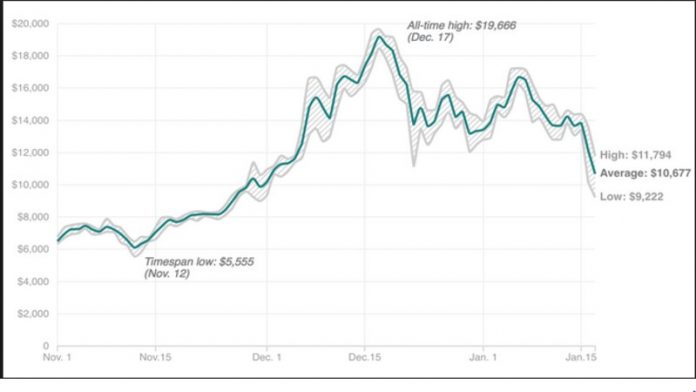On 28 September 2017, Bitcoin (BTC)’s value was equal to $15,433. Today, 15th September 2018, BTC is trading at $6521.81. From the above highlights, we can see that BTC has declined for more than half and its value has been wavering below $7800 for the better part of 2018. At some point, BTC experienced swings of 10% or more every few hours.
The question at the mind of BTC investors and enthusiasts is why has BTC suddenly emerged more volatile? Let us discuss the major factors of this issue.
BTC lacks a Basic Value to Settle At
Stock market declines do not settle at zero because, at a certain point, market basics take control and investors are able to realize some profits from their investments. Let us consider the example of Microsoft Stock that greatly declined during the dotcom period of 2000 from 39.264 in December 1999 to 14.589 in December 2000. Unlike the case of Lehman Brothers in 2008, Microsoft stock did not decline to zero.
The reason here is that the Microsoft stock had a basic value to settle at, as the company persisted to turn out and auction its operating system and expensive office assets.
The issue with buying a BTC is that it does not create profits, but it is basically an online token that is employed as an alternative to transact currency between a buyer and a seller. In layman language, BTC lacks fundamentals.
The only thing that BTC traders and investors have is the hope that the price of BTC will skyrocket in the upcoming days due to its demand.
Extensive Crypto Market Manipulation
Price manipulation is defined as a flip-part of cryptocurrency benefits that they are not under government control. Minus a central authority, greedy participants can alter the value of digital currencies to benefit more than other investors.
Even as BTC deteriorates, there are some signs of bull trapping taking place, by primary low-volume businesses being created to appear to signal a value-reversal rise, and then marketing to these tricked buyers at higher prices.
This kind of market manipulation greatly causes volatility.
Fraud is Very Common in the Crypto World
A property that lacks a fundamental value is a target of exploitation by scams, who can come up with a big fish narration of the projected values of the property.
“Buy my cryptocurrency today, and I promise you will have a Lamborghini in your garage by tomorrow night.” These are the kind of claims circulating in Bitconnect.
Narrations like this make investors and enthusiasts wonder: “Which cryptocurrencies are real, and which are fake? Are any of them real?” This highly contributes to the volatility nature of BTC.
Financial Institutions haven’t Embraced Cryptocurrencies
Since digital currencies lack intrinsic worth and lack a fundamental pricing system, financial institutions are still avoiding them. This has denied cryptocurrencies the largest pool of riches. Cryptocurrencies have been left to depend on individual investors and traders globally.
The disadvantage of this is that individual stakeholders are seldom buy-and-hold investors and have short investment limits, unlike financial institutions that love long-term investments and hold properties of interest for many years.
The “Store of Value” Philosophy Has Been Fully Exploited
One of the major strongholds of digital currencies is that they can keep value against inflations surrounding government currencies.
The issue is that virtual currencies are apparently too volatile, and no one wants to “store value” in an asset which may swing up and down by 10% or more after every few days. With the threat of price decline, cryptocurrencies may not offer protection against inflation in the next decade.
In conclusion, digital currencies will never cease to be volatile (excluding the moments when values are very low) since they are based on speculation.




